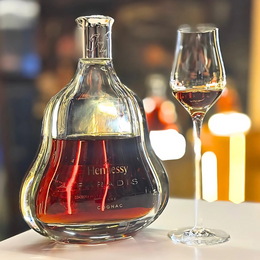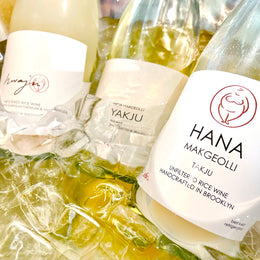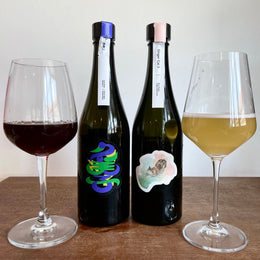
Camus is today the largest fully family-owned Cognac house, with an over 160 year history that is still very much unfolding. The Camus house spans five generations and is dotted by inspiring characters and a rather interesting tagline of being the "most aromatic of all Cognacs".
Let's talk about it!
The Camus Story
Camus' story begins in 1863, when one Jean-Baptiste Camus, an independent and visionary winemaker, founded "La Grande Marque" — a movement to unite a group of producers to consistently supply quality guaranteed Cognac. Much like many other growers in Cognac, he had started off supplying his Cognacs to the larger houses, but over time felt that the consistency and quality of Cognac's needed to be guaranteed to its fans in order for the overall reputation of Cognacs to grow. With the La Grande Marque, fans would be assured that producers were held to high standards - eventually Camus would even acquire its partners so that it could ensure the entire process from grape to glass was done according to their specifications.
This marked the birth of a legacy that would span generations.


Jean-Baptiste Camus
Five Generations In The Making
The following four generations of the Camus family would honor Jean-Baptiste's legacy by bringing the house to newer heights. For starters, his sons Edmond and Gaston were responsible for expanding sales on the French market, as well as making Camus the official Cognac of the Court of the last Tsar. They made Camus the first Cognac house to sell Cognac in labelled bottles instead of barrels, which instantly made the Camus name recognisable.
His grandson Michel Camus, also notably expanded the business internationally, particularly in duty-free markets. He introduced innovative packaging and presentation through the use of special Limoges porcelain and Baccarat crystals, elevating Camus' brand image in the mid-20th century.

House Camus.
Fourth generation Jean-Paul Camus would join in 1945 and help the family business acquire new vineyards and establish new distilleries, concentrating the family's vines in the Borderies area - the smallest of Cognac's five appellations, yet also the most prized for its ability to produce exceptionally aromatic fruit. It was also under Jean-Paul that Camus became the most popular Cognac in Japan!
Today the Camus house is managed by Cyril Camus who continues to oversee new product launches and Camus' ongoing and critical relationships with the duty-free markets.

With its history established, its worth talking about how Camus actually produces what its says is the most aromatic Cognac available, and what makes Camus different.
The Proof In The Pudding, Or How Camus Makes Its Cognac Different
For a start, Camus has a big focus on the Borderies region as mentioned. Whilst other houses may tend to focus on the traditionally prized Grande Champagne, and if not, may occupy Petite Champagne or elsewhere, the choice to concentrate in Borderies is a very unique one considering that the region produces perhaps the most unique of grapes across Cognac - and so from the get go Camus's fruit is primed to stand out. This is as Borderies has a higher composition of silico-clay soils that come out of thousands of years of limestone decomposition that produces clay and flint, which translates into more aromatic fruit. On top of that, Camus operates its vineyards to pretty high environmentally sustainable standards, growing all three Cognac grapes, Ugni Blanc, Folle Blanche and Colombard, the latter two being relatively rarer these days.

A focus on the Borderies Cru.
From there, Camus again chooses to use a very special technique of distilling all its wines with its lees - a process that is only used by Camus. This allows more aromas to be extracted from the wine and produces more distinct spirit. With more aromatic compounds pulled out of the wine, this is what bases Camus' claim to producing the most aromatic Cognac, as Camus points out that other Cognac houses would not prefer to produce Cognac in the same manner as they would want more neutral eau-de-vie that makes blending easier for larger quantities. This is the basis of Camus' house style.
From there, the house then fills its spirit into smaller sized 350-liter barrels to age their eau-de-vie. The barrels are made traditionally from French oak coming from the Tronçais forests in Allier, which produces fine-grained wood that have soft tannins, and thus even as the smaller barrels are designed to maximise contact between the spirit and wood, Camus says its able to prevent too much oak from coming through, and thus keeps that floral and fruity house style.

Distillation with wines on the lees is core to the Camus house style.
And so with that, today we're going to try the Camus VSOP. This is made with eaux-de-vie from primarily the Borderies Cru (although Cognacs from other appellations do go into the cuvee as well), and is said to be the most floral of the Camus stable. As per its VSOP designation, this is aged for at least 4 years.
Let's get into it!
Camus VSOP Cognac, 40% ABV - Review

Tasting Notes
Colour: Amber
Aroma: Really fresh, filled up with lots of florals and dried orchard fruits. Yellow raisins, chrysanthemum tea, aromatic black tea minus the tannins, all of which laid over a base of honey and maltose candy. Some pollen as well, giving it an almost herbal floral quality. It’s incredibly rich, vibrantly perfumed floral and herbal aromas.
Taste: Medium-bodied here. Light honey, it is pretty taut and lean, garnished once again with that herbal chrysanthemum tea and pollen, along with servings of yellow raisins. It’s reminiscent of maltose candy being stretched out, where the structure and outline is made really precise and detailed, giving this concentrated and crystalline body of herbal florals.
Finish: It persists on honey, chrysanthemum tea, pollen, and with time, lifts to become more candied and floral. Long and richly aromatic finish.

My Thoughts
This was impressively floral! And what I like even more than that is the herbal aspect that comes alongside the florals - something that I certainly have not found in any other Cognac. “Intensely Aromatic” definitely nails it here. The shades of florals that this expresses is also pretty wonderful - chrysanthemums, pollen, and black tea - yes, yes, I know the last two aren’t florals but they extend that spectrum here. It’s really expressive and truly the most yellow florals I’ve found across any Cognac. Evocative, vibrant and perfumed!
Kanpai!

@111hotpot







